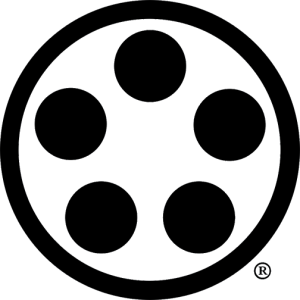After The First Class of theYear
One thing that stands out about a sword is sori. And if it's a good sword, it is also beautiful. But why?
The relationship between form and function is an old mystery. "Form follows function" seems to hold true, even as new forms arrive, following functions we never heard of, and can take some time to acquire the taste. Stravinsky’s "Rite of Spring" was a form so alien it drove little old ladies to bloody violence at the first performance. But a year later the composer was carried down the street as a hero, and eventually the work found its way into a Walt Disney film for children.
The curvature of a good katana is usually not an arc, nor a parabolic or hyperbolic curve, but a particularly elegant changing line. It is more like something shaped by wind than any mathematical expression. It seems to move, alive inch by inch, as trajectory accelerates, then soars.
Well-known corporate logos ("swoosh", or "smile"), mere "brands" seared into our mental flesh to denote ownership, cannot even hint at this elegance. No: this is a curve of nature, a form not to be measured in return-on-investment. A curve of perfection no such calculus could ever approximate. A shape only partly attributable to the smith and the ore.
A sword assumes this shape in the quenching process. If the smith has upset the metals just so, the emerging blade bends neither left nor right, but arches its back, graceful as a drawn bow. The myriad variables involved cannot be added up to make a good sword. The steps in a process are necessary-but-not-sufficient. There is no ingredient or technique that imbues the result with that esthetic quality which affects us so profoundly.
And this shape has much to say about sharpness when cutting. It determines certain angles that come into play on impact. The edge of such a blade is actually sharper in that moment, because the geometry becomes dynamic in the cut.
And the whole, if more than the sum of its parts, is beautiful.
This beauty and function thing is a correlation, which suggests that we could produce a good blade by performing each of the thousands of steps involved precisely according to specifications; or we could do everything beautifully, and attain the same result. However, while correlation is not cause-and-effect, the number of new students entering a dōjō for the first time, and doing anything beautifully, is probably less than one. A correlation may not be reciprocal.
The reasons for this apparent difference, that you can't get to beautiful without going through the long and arduous process of keiko, may have to do with the different ways in which our left and right brain hemispheres work together, while each having a separate experience. For exhaustive detail on this very new information, see Dr. Iain McGilchrist's recent work, "The Matter With Things: Our Brains, Our Delusions and the Unmaking of the World".
While discussing myth, insight and intuition in relation to logic, McGilchrist explains in passing (and characteristically accompanied by a lot of impressive witnesses) that beauty is actually essential to scientific progress:
“Beauty is a test of correctness that many mathematicians, philosophers and scientists have experienced as a touchstone in their work. GH Hardy, in his A Mathematician’s Apology, wrote: ‘Beauty is the first test; there is no permanent place in the world for ugly mathematics.’ Similarly Henri Poincaré wrote that ‘the feeling of mathematical beauty, of the harmony of numbers and forms and of geometric elegance … is a real aesthetic feeling that all true mathematicians know.’ According to Bertrand Russell, ‘mathematics, rightly viewed, possesses not only truth, but supreme beauty.’ Paul Dirac even pronounced, in relation to the discovery by Schrödinger of the wave equation: ‘It is more important to have beauty in one’s equations than to have them fit experiment’. This is because initially Schrödinger’s equation did not fit the data, given the state of knowledge at the time, and he lost heart: but once electron spin was discovered, it fitted the data perfectly. Schrödinger, according to Dirac, got this ‘very beautiful equation … by pure thought, looking for some beautiful generalization of De Broglie’s ideas … It seems that if one is working from the point of view of getting beauty in one’s equations, and if one has really a sound insight, one is on a sure line of progress.’”
Einstein said he was not able to think up his theories in words, but had to play the piano and visualize shapes, only later constructing the equations for what he found in his "thought experiments."
According to current lateralization theory, then, the right side passes raw experience non-verbally to the more analytically-minded (and talkative) left, which works out the practices that (it supposes) will add up to perfect performance. But they don't add up, and instead these routines become familiar, and pass back to the right half as skills that may be invoked like walking or eating, requiring only "walk" or "eat" (or "*Ukemi!*"); no thought about which muscles to apply, or what to do with the hands. It is only then that performance may possibly become beautiful.
But for present purposes, think about that tension between form and performance... between function and beauty...or mune and ha.
In the quenching of a sword a complex system of tension and compression is set up in within the blade itself, as mune and ha cool at different speeds and temperatures. The curve is thus not only the final shape of a forged lump of iron, but a shape held between the different expansion and contraction of disparate crystalline structures. A ha-giri, for example, may distort or break this shape as the edge tension is interrupted at the crack.
We may understand, then, if we haven't already felt this, how a good blade seems alive. I have an old one (affectionately known as "Train Wreck") that has been appraised as koto, and yet a Japanese appraiser withheld an oshigata, commenting that it was "made to look old." I comfort myself that he was concerned only with a level of polish, while I had held the sword for one second at a gun show, and knew they would have to pry it from my cold dead fingers to get it back.
One part of our being is concerned with technique, the other with flow. parts of a blade are in tension against other parts that are in compression. In te-no-uchi the left hand pulls into the cut with power, the right extending to the target. These describe the principle in different ways, but form and function are only separate as concepts, the way we speak of mind and body; they are not two things, and there are two hemispheres but not two brains, and the path to perfection may not necessarily wind through one for a long distance before the other is involved. There is back-and-forth, some inhibitory, some enhancing.
And if it is not beautiful?
There are other forms that demonstrate the principle. The sheer-line of a sailing ship speaks volumes about her seaworthiness. The long partly-seasoned timbers called "sheer-clamps" (the board in "overboard") are bent-in hot, joining hull and deck from stem to stern, only assuming their final shape as they cool and dry. Like sori, this sets up certain angles that become part of the dynamic when cutting through the water. And the shape of a hull is maintained by that interplay of tension and compression for the life of the ship. It's why they are called "clamps." If the sheer-clamps turn out less than beautiful, they have turned out wrong. That beauty shows up missing, in a hogged old hulk, stem and stern drooping tiredly toward the water, when the life has gone out of her.
Optimal function is inseparable from beautiful form; and there is lively interplay between them. Software engineers encounter this when pages of developing code suddenly collapse into one elegant expression. Artists sometimes can't put a finger on just why their work isn't quite finished, until that one final stroke of genius. Great moments in sports are generally characterized as beautiful, and sometimes the beauty is all there is: the play has failed. Wars have been interrupted or forestalled. Powered flight went through several episodes in which esthetics was all that kept them aloft. A famous musician complained, "But Maestro, every note is correct!" And she replied "I know. It is still wrong!"
And of course, kata that is not elegant, is not kata. Your Instructor says: "It's perfect. I don't like it. Mo ichi do!"
Beauty is a practical matter.
My answer, then, to "Why is a good sword also beautiful?" is: because it is good. And vice-versa.
The End


